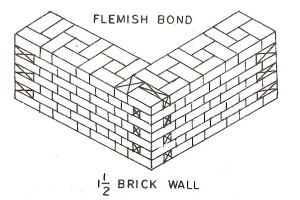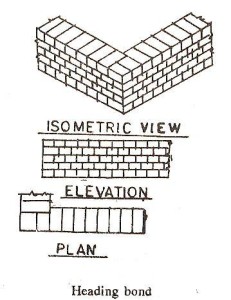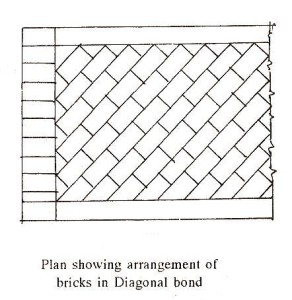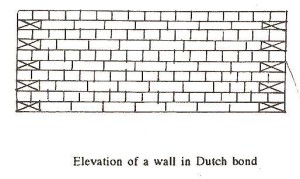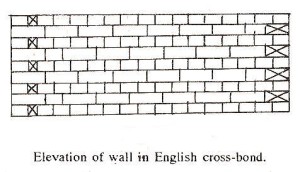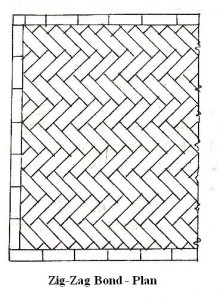
DESIGN METHODS FOR BEAMS AND COLUMNS
A number of different design methods have been used for reinforced concrete construction. The three most common are working-stress design, ultimate-strength
design, and strength design method. Each method has its backers and supporters.
For actual designs the latest edition of the ACI Code should be consulted.
Beams
Concrete beams may be considered to be of three principal types: (1) rectangular beams with tensile reinforcing only, (2) T-beams with tensile reinforcing
only, and (3) beams with tensile and compressive reinforcing.
Rectangular Beams with Tensile Reinforcing Only This type of beam includes
slabs, for which the beam width b equals 12 in (305 mm) when the moment and
shear are expressed per foot (m) of width. The stresses in the concrete and steel
are, using working-stress design formulas,

CONCRETE FORMULAS
Cross section of beam Stress diagram

 FIGURE 5.1 Rectangular concrete beam with tensile reinforcing only
FIGURE 5.1 Rectangular concrete beam with tensile reinforcing only
| ABLE 5.1 | Guides to Depth d of Reinforced |
| Concrete Beam* Member | d |
| Roof and floor slabs | l/25 |
| Light beams | l/15 |
| Heavy beams and girders | l/12–l/10 |
*l is the span of the beam or slab in inches (millimeters
The width of a beam should be at least l/32.
TABLE 5.2 Coefficients K, k, j, and p for Rectangular Sections*

Values of K, k, j, and p for commonly used stresses are given in Table 5.2.
T-Beams with Tensile Reinforcing Only When a concrete slab is constructed
monolithically with the supporting concrete beams, a portion of the slab acts as the
upper flange of the beam. The effective flange width should not exceed (1) onefourth the span of the beam, (2) the width of the web portion of the beam plus 16
times the thickness of the slab, or (3) the center-to-center distance between beams.
T-beams where the upper flange is not a portion of a slab should have a flange
thickness not less than one-half the width of the web and a flange width not more
than four times the width of the web. For preliminary designs, the preceding
formulas given for rectangular beams with tensile reinforcing only can be used,
because the neutral axis is usually in, or near, the flange. The area of tensile
reinforcing is usually critical.
Beams with Tensile and Compressive Reinforcing Beams with compressive
reinforcing are generally used when the size of the beam is limited. The
allowable beam dimensions are used in the formulas given earlier to determine
the moment that could be carried by a beam without compressive reinforcement.
The reinforcing requirements may then be approximately determined from

Checking Stresses in Beams Beams designed using the preceding approximate
formulas should be checked to ensure that the actual stresses do not exceed the
allowable, and that the reinforcing is not excessive. This can be accomplished by
determining the moment of inertia of the beam. In this determination, the
concrete below the neutral axis should not be considered as stressed, whereas the
reinforcing steel should be transformed into an equivalent concrete section. For
tensile reinforcing, this transformation is made by multiplying the area As by n,
the ratio of the modulus of elasticity of steel to that of concrete. For compressive
reinforcing, the area Asc is multiplied by 2(n – 1). This factor includes allowances
for the concrete in compression replaced by the compressive reinforcing and for
the plastic flow of concrete. The neutral axis is then located by solving


FIGURE 5.2 Transformed section of concrete beam
- Columns
The principal columns in a structure should have a minimum diameter of 10 in
(255 mm) or, for rectangular columns, a minimum thickness of 8 in(203 mm) and
a minimum gross cross-sectional area of 96 in2 (61,935 mm2).
Short columns with closely spaced spiral reinforcing enclosing a circular
concrete core reinforced with vertical bars have a maximum allowable load of

Short Columns with Ties The maximum allowable load on short columns
reinforced with longitudinal bars and separate lateral ties is 85 percent of that given
reinforced with longitudinal bars and separate lateral ties is 85 percent of that given




